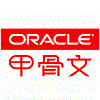利用 es6 new.target 来对模拟抽象类
起源
最近在使用 Symbol 来做为唯一值,发现 Symbol 无法进行 new 操作,只能当作函数使用,只要进行了new 就会发生类型错误
new Symbol()
// error
Uncaught TypeError: Symbol is not a constructor
at new Symbol (<anonymous>)
at <anonymous>:1:1
在不考虑底层实现的情况下,在代码层面是否能够实现一个函数只可以进行调用而不可以进行 new 操作呢?思考之后如下写出:
function disConstructor() {
if (this !== window) {
throw new TypeError(' disConstructor is not a constructor')
}
console.log('gogo go')
}
// 测试结果如下
disConstructor() // gogo go
new disConstructor()
// error
Uncaught TypeError: disConstructor is not a constructor
at new disConstructor (<anonymous>:3:15)
at <anonymous>:1:1
如果使用 nodejs,window 可以切换为 global, 代码运行结果不变,因为对于个人而言没有适用场景。于是就没有继续研究下去,可是最近在从新翻阅 es6 时候发现 new.target这个属性。
new.target 属性
介绍(引用 mdn 文档)
new.target属性允许你检测函数或构造方法是否是通过new运算符被调用的。
在通过new运算符被初始化的函数或构造方法中,new.target返回一个指向构造方法或函数的引用。在普通的函数调用中,new.target 的值是undefined。
这样的话 我们的代码就可以这样改为
function disConstructor() {
// 普通的函数调用中,new.target 的值是undefined。
if (new.target) {
throw new TypeError(' disConstructor is not a constructor')
}
console.log('gogo go')
}
得到与上述代码一样的答案。
深入
难道 es6 特地添加的功能仅仅只能用于检查一下我们的函数调用方式吗?
在查阅的过程各种发现了大多数都方案都是用 new.target 写出只能被继承的类。类似于实现java的抽象类。
class Animal {
constructor(name, age) {
if (new.target === Animal) {
throw new Error('Animal class can`t instantiate');
}
this.name = name
this.age = age
}
// 其他代码
...
}
class Dog extends Animal{
constructor(name, age, sex) {
super(name, age)
this.sex = sex
}
}
new Animal()
// error
Uncaught Error: Animal class can`t instantiate
at new Animal (<anonymous>:4:13)
at <anonymous>:1:1
new Dog('mimi', 12, '公')
// Dog {name: "mimi", age: 12, sex: "公"}
但是 java抽象类抽象方法需要重写,这个是没有方案的。于是在测试与使用的过程中,却意外发现了超类可以在构造期间访问派生类的原型,利用起来。
class Animal {
constructor(name, age) {
console.log(new.target.prototype)
}
// 其他代码
...
}
之前运行时调用需要重写的方法报错是这样写的。
class Animal {
constructor(name, age) {
this.name = name
this.age = age
}
getName () {
throw new Error('please overwrite getName method')
}
}
class Dog extends Animal{
constructor(name, age, sex) {
super(name, age)
this.sex = sex
}
}
const pite = new Dog('pite', 2, '公')
a.getName()
// error
Uncaught Error: please overwrite getName method
at Dog.getName (<anonymous>:8:11)
at <anonymous>:1:3
然而此时利用 new.target ,我就可以利用 构造期间 对子类进行操作报错。
class Animal {
constructor(name, age) {
// 如果 target 不是 基类 且 没有 getName 报错
if (new.target !== Animal && !new.target.prototype.hasOwnProperty('getName')) {
throw new Error('please overwrite getName method')
}
this.name = name
this.age = age
}
}
class Dog extends Animal{
constructor(name, age, sex) {
super(name, age)
this.sex = sex
}
}
const pite = new Dog('pite', 2, '公')
// error
Uncaught Error: please overwrite getName method
at new Animal (<anonymous>:5:13)
at new Dog (<anonymous>:14:5)
at <anonymous>:1:1
此时可以把运行方法时候发生的错误提前到构造时期,虽然都是在运行期,但是该错误触发机制要早危害要大。反而对代码是一种保护。
当然了,利用超类可以在构造期间访问派生类的原型作用远远不是那么简单,必然是很强大的,可以结合业务场景谈一谈理解和作用。
其他方案
增加 编辑器插件
proxy
修饰器






